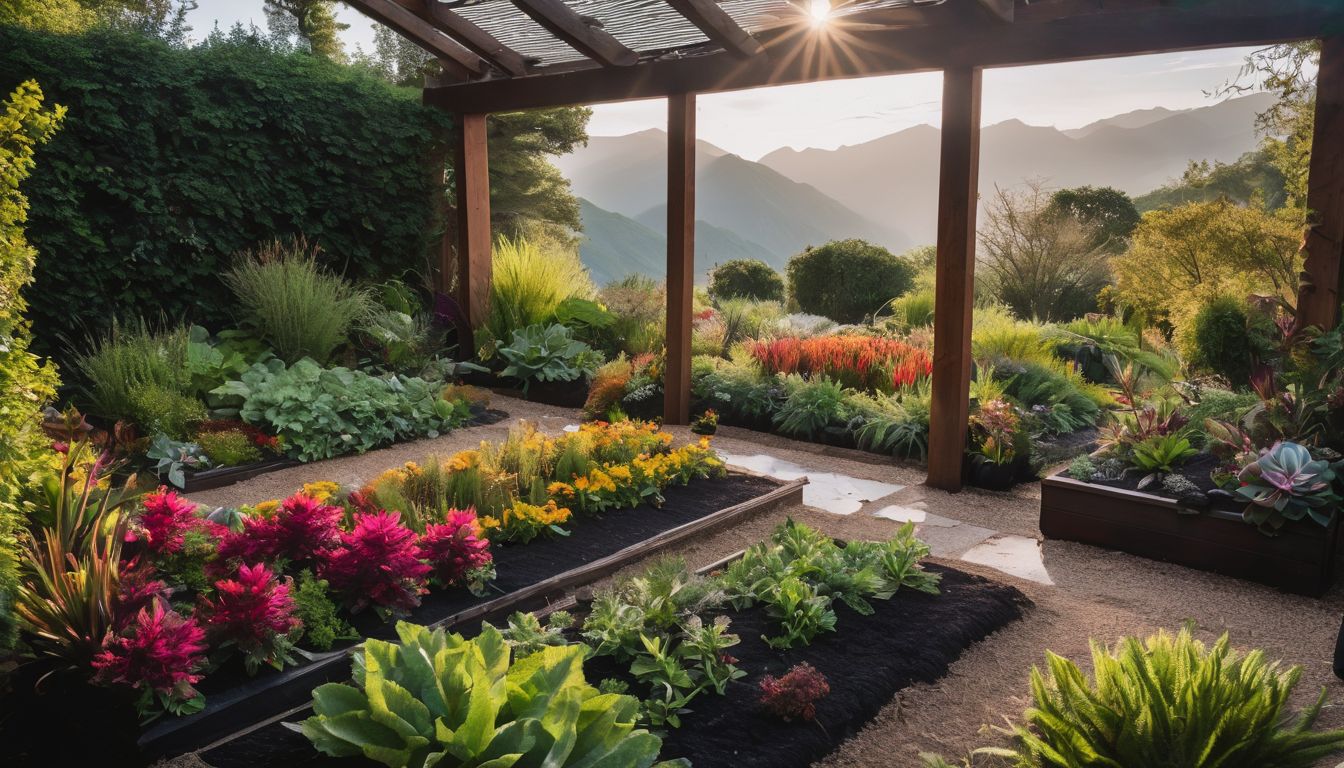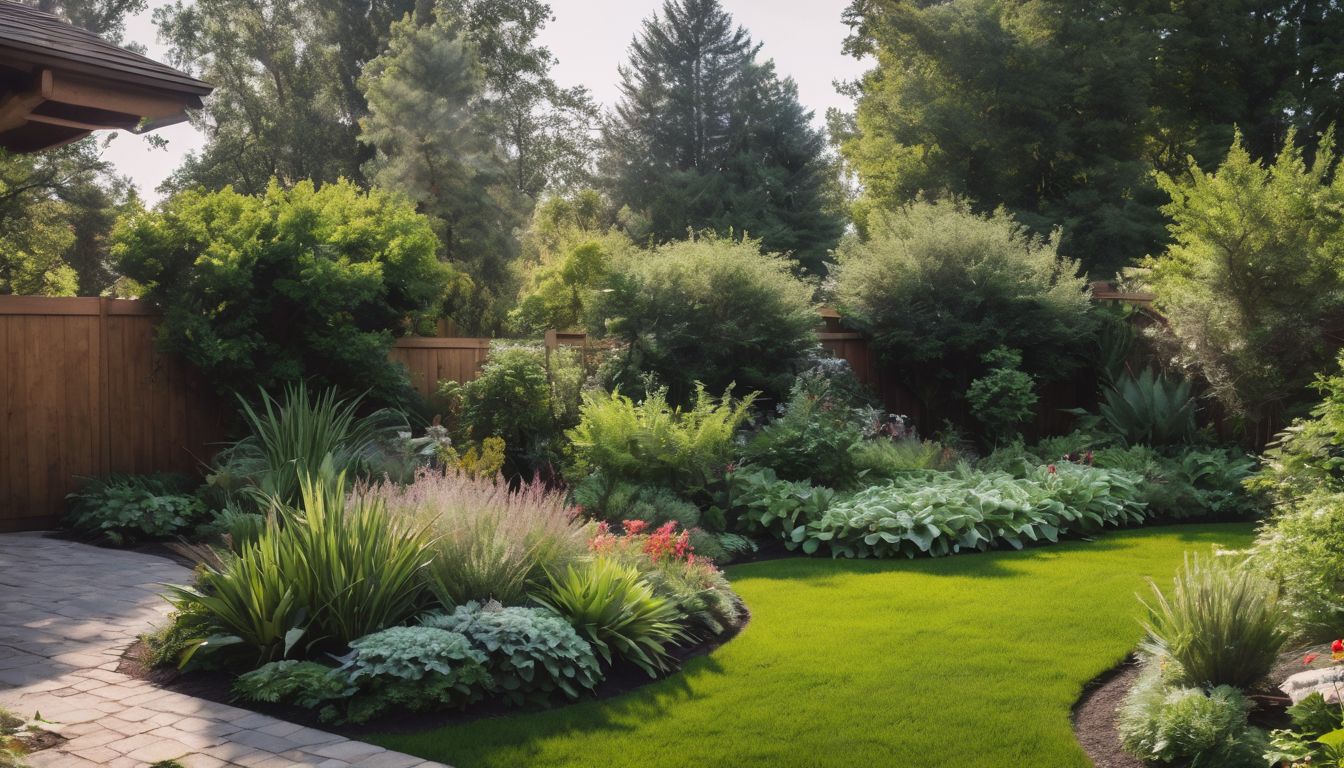Different types of edible flowers
Edible flowers come in a variety of types, offering both visual appeal and culinary uses. Some popular options include roses, violets, nasturtiums, lavender, and pansies. These flowers not only add vibrant colors to your garden but can also be used to elevate the flavors of your dishes.
Other edible flower options include borage with its cucumber-like taste, chamomile for a hint of apple flavor, and hibiscus for its tart cranberry note. Additionally, don’t overlook chive blossoms which provide an oniony kick to recipes or elderflowers known for their delicate floral fragrance.
Incorporating these different types of edible flowers into your garden ensures a diverse selection of flavors and aromas for your culinary creations.
How to Grow Edible Flowers in Your Garden
To grow edible flowers in your garden, it’s important to provide the best growing conditions and choose popular options like nasturtiums, violets, and roses. Follow these tips for planting and caring for edible flowers to ensure a successful harvest.
The Benefits of Growing Edible Flowers
Growing edible flowers in your garden not only adds a pop of color and beauty but also enhances the flavor of your cooking. Additionally, many edible flowers offer nutritional benefits, making them a worthwhile addition to any environmentally conscious individual’s garden.
Adds beauty to your garden
Edible flowers add vibrant and eye-catching colours to your garden, enhancing its visual appeal. Their delicate petals provide a picturesque contrast against green foliage, creating a visually stunning and inviting outdoor space.
The blossoms of edible flowers such as pansies, nasturtiums, and borage can infuse your garden with an array of hues from bright yellows to deep purples, turning it into a colourful oasis that attracts attention and admiration.
These beautiful blooms not only captivate the eye but also contribute to the overall aesthetic charm of your outdoor environment.
Moreover, incorporating edible flowers in your garden adds an element of natural elegance and sophistication. Whether planted alongside traditional herbs or in dedicated flower beds, their presence elevates the visual allure of any landscape setting.
Adds flavor to your cooking
Edible flowers add a delightful and unique flavour to your cooking, creating a sensory experience that elevates your dishes. Incorporating edible flowers into your recipes can introduce subtle floral notes or even bold, distinct flavours, enhancing the overall taste profile of your culinary creations.
From vibrant nasturtiums adding a peppery kick to salads to delicate rose petals infusing desserts with fragrant sweetness, edible flowers offer an array of tastes to experiment with in the kitchen.
When utilised thoughtfully and sparingly, edible flowers can transform ordinary meals into extraordinary culinary delights. The versatility of these blooms allows you to explore new dimensions of flavour in both savoury and sweet dishes.
Experimenting with different edible flower varieties enables you to discover exciting combinations that tantalise the taste buds and expand your gastronomic repertoire.
Nutritional benefits
Adding flavor to your cooking is just one of the advantages of growing edible flowers. Many edible flowers are also packed with essential nutrients that can complement a healthy diet.
For example, nasturtiums are rich in Vitamin C and have antioxidant properties, while calendula petals contain lutein, a compound known for promoting eye health. Incorporating these blooms into your meals not only adds vibrancy but also boosts the nutritional value of your dishes.
In addition to their visual appeal and taste enhancement, edible flowers can contribute valuable vitamins, minerals, and antioxidants to your diet. Marigolds offer anti-inflammatory benefits due to their high content of flavonoids, and lavender contains compounds that promote relaxation.
Edible Flower Recipes
Explore creative ways to incorporate edible flowers into your cooking with our delicious salad, dessert and drink recipes. Encourage readers to add beauty and flavor to their garden by trying out some of these delightful recipes.
Salads with edible flowers
Enhance your salads with the vibrant colors and delicate flavors of edible flowers. Add a pop of visual appeal to your salad bowl by incorporating blooms such as nasturtium, pansies, or calendula.
Edible flowers not only provide an aesthetic touch but also introduce unique tastes to your dishes. Experiment with different combinations of lettuce, arugula, and herbs like basil or mint for a refreshing and flavorful salad experience.
Elevate your culinary creations by garnishing your salads with edible flowers. These floral accents not only offer a delightful burst of flavor but also contribute to sustainable gardening practices.
Desserts with edible flowers
Dress up your desserts with a touch of elegance by incorporating edible flowers. Elevate your sweet treats with delicate floral notes and vibrant colours. Add pansies to cupcakes for a pop of colour, or crystallise rose petals to decorate cakes.
Edible flowers like violets and lavender can infuse ice creams with subtle, aromatic flavours. Enhance the presentation of your desserts while adding an extra layer of sophistication.
Not only do edible flowers make desserts visually appealing, but they also introduce unique flavours that transform ordinary desserts into extraordinary creations. Try topping off a fruit tart with edible nasturtiums or garnishing a panna cotta with fragrant elderflowers for an elegant finishing touch on your culinary masterpieces!
Drinks with edible flowers
Adding edible flowers to your drinks can elevate the visual appeal and taste. Experiment with floral infusions in your favourite beverages to create refreshing and Instagram-worthy concoctions.
Try adding a few fresh borage flowers to a glass of lemonade for a delightful twist on a classic summer drink. Alternatively, freeze small edible flowers into ice cubes to add an elegant touch to any beverage.
Enhance the flavour of your cocktails by garnishing them with delicate pansies or violets. These vibrant blooms not only enhance the aesthetic but also bring subtle floral notes that complement various spirits and mixers beautifully.
Conclusion
Encouraging readers to add edible flowers to their garden and try out some delicious recipes. Adding beauty and flavor to your garden while supporting conservation efforts.
Encouraging readers to add edible flowers to their garden and try out some delicious recipes
Enhance your garden’s beauty and flavour by incorporating edible flowers into your landscape. Not only do they add a pop of colour, but they also attract beneficial pollinators while offering an array of culinary options.
From vibrant nasturtiums to delicate pansies, these blooms not only enrich your surroundings but also elevate the taste and visual appeal of dishes. Start small with easy-to-grow options like calendula or borage, then expand to more exotic varieties such as hibiscus or lavender.
Experiment with floral-infused recipes like salads adorned with fresh petals, desserts featuring candied blooms, and refreshing beverages laced with floral notes.
FAQs
1. Can I really eat flowers from my garden?
Yes, many flowers in your garden can be edible and tasty.
2. Which edible flowers are the easiest to grow?
Marigolds, nasturtiums, and pansies are some of the easiest edible flowers to grow.
3. How do I know if a flower is safe to eat?
Only eat flowers that are specifically labeled as edible and have been grown without harmful pesticides or chemicals.
4. Will eating garden flowers make my meals taste better?
Edible flowers can add unique flavours and colours to your dishes, enhancing both taste and presentation.
5. What part of the flower should I use in my cooking?
Typically, the petals are the parts used in cooking for their flavour and aesthetic appeal; remember to remove pistils and stamens before eating.





